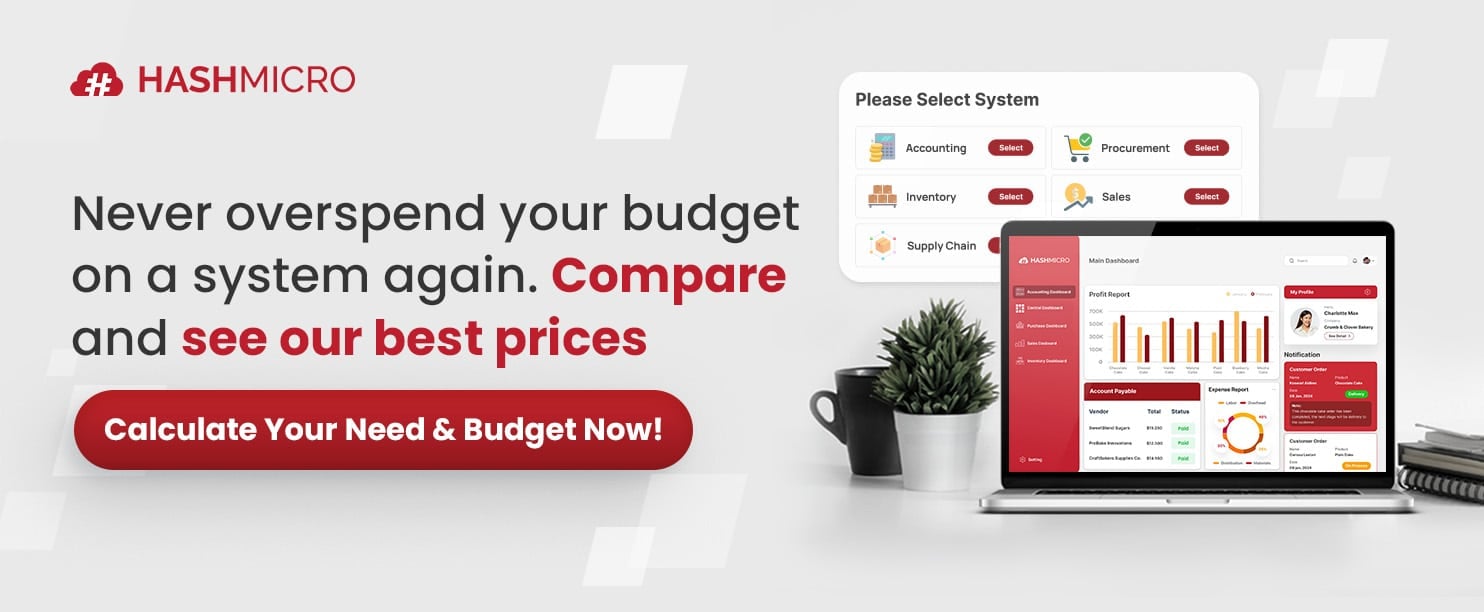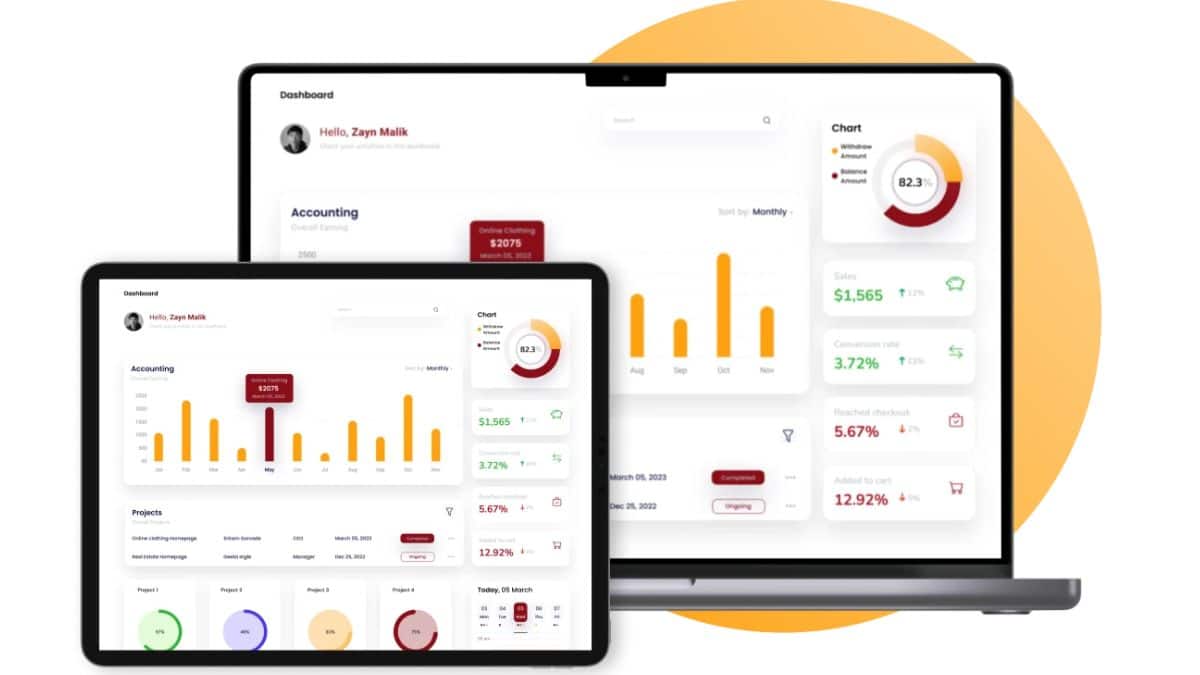Imagine running a business where you frequently face either overstocked warehouses or stockouts — both leading to increased costs and dissatisfied customers. This is a common problem many businesses encounter when managing inventory without the right tools and strategies.
The lack of proper Economic Order Quantity (EOQ) management often results in excessive storage costs or order delays, which can severely impact cash flow and customer satisfaction. Balancing storage costs, order frequency, and demand forecasting is a delicate task that requires precise calculation.
According to researchgate.net, Economic Order Quantity (EOQ) minimizes total incremental costs (ordering and handling) and serves as a crucial tool for optimizing inventory management, with mathematical models being the most effective approach for precise decision-making.
In this article, we’ll explore the importance of EOQ in wholesale business operations and how the right manufacturing inventory software can simplify inventory control, reduce costs, and improve overall efficiency.
Table of Content
Content Lists

Key Takeaways
|
What is Economic Order Quantity (EOQ)?
Economic order quantity (EOQ) is a fundamental concept in inventory management, designed to help businesses determine the optimal order quantity that minimizes total inventory costs. By balancing ordering and holding costs, the EOQ formula ensures that companies avoid overstocking or running out of essential goods, maintaining a steady flow of inventory.
The economic order quantity formula carefully weighs two primary cost factors: storage costs, which rise with higher inventory levels, and ordering costs, which decrease when larger quantities are ordered. This balance allows businesses to achieve inventory order optimization by identifying the most cost-effective purchasing strategy.
First introduced by Ford W. Harris in 1913, the EOQ model remains a cornerstone in operations, logistics, and supply chain management today. Despite its age, the formula continues to offer valuable insights by assuming consistent demand, ordering costs, and holding costs, making it a reliable tool for effective inventory planning.
Ultimately, understanding EOQ meaning and applying this approach helps businesses streamline their inventory processes, reducing both shortages and excess stock. By leveraging the economic order quantity model, companies can improve operational efficiency and enhance customer satisfaction through consistent product availability.
The Difference Between EOQ and EPQ

While both EOQ and EPQ aim to enhance inventory order optimization, they serve distinct purposes. Economic order quantity (EOQ) focuses on determining the optimal order quantity to minimize costs associated with purchasing and storing goods, while economic production quantity (EPQ) emphasizes planning production volumes to meet demand efficiently.
The primary distinction between EOQ and EPQ lies in the source of goods being managed. EOQ is applied when companies procure items from external suppliers, ensuring the right balance between order and holding costs, whereas EPQ is used for internal production, enabling businesses to produce the necessary quantity of goods to fulfill customer demand.
Understanding the eoq meaning and how it differs from EPQ is crucial for effective inventory management. By applying the economic order quantity formula, businesses can avoid overstocking or stockouts, while EPQ ensures smooth and cost-effective production processes. Together, these methods support well-structured supply chain operations and overall efficiency.
The Important of Using EOQ Inventory for Business

Economic Order Quantity (EOQ) plays a crucial role in helping inventory companies manage their stock efficiently. By using the economic order quantity formula, businesses can determine the optimal order quantity, minimizing costs associated with ordering and holding inventory.
Here are the key reasons why EOQ is essential for inventory companies:
- Minimizes ordering and holding costs: EOQ helps companies find the exact point where ordering costs and holding costs are balanced. By optimizing order quantities, businesses avoid unnecessary storage expenses and reduce the frequency of placing new orders, leading to significant cost savings.
- Prevents overstocking and stockouts: Inventory order optimization ensures that businesses order the right amount of goods needed to meet customer demand. This prevents the risk of overstocking, which can lead to increased holding costs and product spoilage, as well as stock outs that can disrupt operations and disappoint customers.
- Enhances business efficiency: Companies that implement EOQ meaningfully improve their operational efficiency. With a well-calculated order quantity, businesses maintain a steady supply of materials, ensuring uninterrupted production and timely fulfillment of customer orders.
- Boosts customer satisfaction: Consistent product availability is key to maintaining customer loyalty. By avoiding stock shortages and delays, EOQ helps companies deliver products on time, strengthening their reputation and enhancing customer satisfaction.
- Supports long-term business growth: Proper inventory management through the EOQ model minimizes financial losses caused by inefficient ordering. This stability enables businesses to focus on growth strategies and long-term sustainability without the constant worry of inventory mismanagement.
Incorporating the economic order quantity formula into inventory management practices is a smart move for any company aiming to achieve efficiency and cost-effectiveness. By maintaining the right balance between order and holding costs, businesses can streamline their operations and enhance overall performance.

Benefits of Using Economic Order Quantity

For Malaysian businesses, maintaining efficient operations and cost control is crucial in a competitive market. One powerful tool that supports these goals is the Economic Order Quantity (EOQ) formula. EOQ helps companies determine the optimal order quantity, balancing the costs of ordering and holding inventory.
Let’s explore some of the key benefits of using EOQ and how it can help Malaysian companies achieve greater efficiency and profitability.
1. Reduces storage costs
One of the primary benefits of implementing the economic order quantity formula is the significant reduction in storage costs. Storage costs refer to expenses incurred from keeping inventory in a warehouse, including warehouse rental, insurance, and the risk of product damage or expiration.
By applying EOQ, businesses can accurately determine the optimal order quantity, ensuring they only store the necessary amount of goods. This minimizes excess stock, helping companies avoid unnecessary storage fees and maintain better control over operational costs.
2. Optimizes ordering costs
EOQ also plays a vital role in optimizing ordering costs, which is crucial for businesses looking to manage expenses efficiently. By using the economic order quantity formula, companies can determine the right number of goods to order processing at the right time, reducing the frequency of unnecessary purchases.
This not only cuts down on administrative and logistical expenses but also decreases the workload of employees handling procurement processes. As a result, businesses can streamline their operations and focus resources on more strategic initiatives that drive growth and efficiency.
3. Enhances inventory control
Effective inventory order optimization is another key advantage of EOQ implementation. With a well-calculated order quantity, companies can maintain an ideal balance between supply and demand, avoiding both overstock and stock shortages.
This ensures that businesses can fulfill customer orders promptly, enhancing customer satisfaction and loyalty. Better inventory control also allows for more accurate forecasting and planning, which is essential for sustaining long-term business success.
4. Boosts operational efficiency
When storage costs are minimized, ordering costs are optimized, and inventory control is enhanced, the natural outcome is improved operational efficiency. Malaysian businesses can benefit from streamlined processes, allowing them to allocate time, manpower, and financial resources more effectively.
With EOQ reducing the risks of overstocking and understocking, companies can avoid disruptions and maintain smooth business operations. Ultimately, this efficiency leads to better productivity and positions the business for sustainable growth in a competitive market.
How to Calculate Economic Order Quantity?

Calculating the Economic Order Quantity formula requires a clear understanding of three essential variables:
- Demand (D) refers to the total number of units needed annually
- Order cost (S) represents the fixed expense incurred each time an order is placed
- Holding cost (H) is the yearly cost of storing one unit of inventory.
Together, these factors help businesses determine the most cost-efficient order quantity. Then, what is the formula used to input these three variables into the EOQ model? Here is the formula that you can use:

The economic order quantity formula works by balancing the costs of ordering and holding inventory to minimize total inventory costs. By setting the first-order derivative of the total cost function to zero, businesses can pinpoint the optimal order quantity.
To apply the EOQ formula accurately, it’s crucial to input the right values for each variable and understand their implications on overall costs. Effective inventory order optimization through EOQ not only streamlines procurement but also enhances operational efficiency and cost management.
Common Challenges Businesses Face in Implementing EOQ

Implementing the Economic Order Quantity (EOQ) model offers businesses a structured approach to managing inventory, but it also comes with its own set of challenges. Ensuring that EOQ calculations are accurate and effective requires careful consideration of various factors, from data accuracy to system capabilities.
Let’s explore some of the most common hurdles businesses encounter when applying the economic order quantity formula and how these issues can affect inventory order optimization.
1. Difficulty in acquiring accurate and relevant data
One of the primary challenges businesses face when implementing the economic order quantity formula is obtaining precise and up-to-date data. Essential information such as ordering costs, holding costs, and product demand levels must be accurate to ensure EOQ calculations reflect real-world conditions.
Unfortunately, not all companies have systems that can generate this data in real-time, making it difficult to apply the formula correctly. Without accurate data, businesses risk ordering too much or too little inventory, which can negatively impact financial health and operational efficiency.
2. Adapting to seasonal demand fluctuations
The EOQ model often struggles to accommodate dynamic, seasonal changes in demand, especially in industries like retail and manufacturing. Since the economic order quantity formula assumes consistent demand, it may lead to overstocking during low seasons or stockouts during peak seasons.
To overcome this, businesses should adjust their EOQ calculations for seasonal variations or consider more flexible approaches like the Just-In-Time (JIT) inventory system. By accurately forecasting seasonal trends, companies can align their inventory strategy with market demand more effectively.
3. Scaling EOQ with business growth
As a business expands, its product range, supplier network, and distribution complexity also grow, making EOQ calculations more challenging. Static EOQ models may become outdated and fail to reflect evolving operational costs like increased storage fees or fluctuating order costs.
Therefore, businesses must regularly review and adjust their EOQ models to maintain optimal inventory management. Keeping the EOQ formula aligned with the company’s current scale ensures efficient operations and minimizes the risk of mismanaged stock.
4. Limitations of existing inventory management systems
An outdated or inadequate inventory management system can hinder the accurate application of the EOQ model. As businesses grow, their systems must scale to handle larger transaction volumes, diverse product lines, and increased operational complexity.
Without robust inventory management software, companies may struggle to access real-time data needed for EOQ calculations, leading to errors and inefficiencies. Investing in scalable and feature-rich systems ensures seamless data management and supports accurate inventory order optimization.
Achieve Efficient EOQ Optimization with HashMicro’s Inventory Management System

HashMicro offers a comprehensive inventory management software solution designed to help businesses efficiently manage their economic order quantity (EOQ). A standout feature is the automation of inventory planning and order optimization, ensuring that every aspect of your supply chain is accurately updated and managed with ease.
Experience the power of HashMicro’s inventory management software through a free demo. Discover how automation simplifies EOQ management, enhances inventory visibility, and ensures timely updates, minimizing stock issues and maximizing operational efficiency.
Why choose HashMicro? Our inventory management software automates crucial EOQ management tasks, such as tracking inventory levels, adjusting order quantities, and optimizing resource allocation, improving overall operational efficiency. Its seamless integration with other inventory management modules provides a unified solution for businesses looking to streamline their supply chain workflows.
Below are some of the key features of HashMicro’s inventory management software for EOQ management:
- Stock Forecasting: Anticipate future inventory needs with data-driven insights, ensuring your EOQ calculations always align with real demand trends.
- Run Rate Reordering Rules: Streamline your ordering process by setting automatic reorder points based on product consumption rates, minimizing stockouts and overstocking.
- Fast Moving and Slow Moving Stock Analysis: Identify product movement patterns with ease, enabling smarter purchasing decisions and optimized inventory levels.
- Stock Optimizer per Warehouse: Maintain balanced inventory across multiple locations, reducing holding costs while ensuring product availability.
- Racking Capacity with Putaway Strategy: Optimize warehouse space by strategically placing stock based on demand frequency and storage efficiency.
- Stock Reservations & Reporting: Secure inventory for specific orders while keeping track of stock movements, ensuring order accuracy and timely fulfillment.
- Replenishment Product with Multiple Action: Automate your restocking process by generating purchase orders when stock reaches critical levels, keeping operations running smoothly.
- Lot & Serial Number Management: Maintain full traceability of inventory, reducing errors and ensuring accurate tracking from procurement to delivery.
- Stocks per Warehouse with Forecasting: Get a complete view of current stock levels and projected inflows and outflows, enabling more informed EOQ planning.
- Multi-UOM (Unit of Measurement): Simplify inventory tracking by managing stock in different units of measure, reducing conversion errors and improving efficiency.
These capabilities improve inventory tracking, reduce errors, and optimize order planning. With HashMicro’s inventory management software, businesses can enhance their inventory management, improve order accuracy, and ensure the timely fulfillment of customer demands.
Conclusion
Economic Order Quantity (EOQ) is a vital inventory management method that helps businesses maintain the perfect balance between ordering costs and holding costs. By determining the optimal order quantity, companies can avoid the risks of overstocking or understocking, ensuring smooth business operations and efficient cash flow.
For businesses in Malaysia looking to enhance their EOQ management, HashMicro’s inventory management software offers the best solution. The system’s seamless integration capabilities also allow businesses to adopt new technologies without disrupting existing workflows, making it the perfect tool for companies aiming to grow and stay competitive.
Take the next step in optimizing your inventory management by scheduling a free demo of HashMicro’s inventory management software today. Experience firsthand how this powerful system can increase productivity, improve cost efficiency, and support your business’s long-term success.































